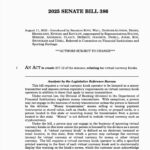This Week in DeFi: Wall Street’s Influence and Ether’s Challenges
This week in DeFi, a discussion surfaced regarding whether the increasing involvement of Wall Street players might lead to the crypto market’s first prolonged “supercycle,” resulting in digital asset values exceeding the historical four-year cycle duration.
Ethereum and Wall Street’s Influence
As the top smart contract blockchain, Ethereum’s native token, Ether (ETH), could potentially gain from “Wall Street running into the blockchain,” according to BitMine, the largest institutional holder of ETH.
Despite this optimistic outlook, Ether’s price has seen a decline of 13% over the past week, dipping below the $4,000 mark for the first time since August 8.
In the broader cryptocurrency landscape, the Hyperliquid (HYPE) token’s vesting timeline will distribute nearly $11.9 billion in HYPE tokens over a two-year period for the team, which could represent the “first true test” for the token’s resilience, as noted by BitMEX co-founder Arthur Hayes’ family office, Maelstrom, on Monday.
Dubbed a “Sword of Damocles” moment, this will introduce approximately $500 million in monthly unlocks, with only around 17% likely to be absorbed by buybacks, leaving about $410 million potentially affecting supply, according to Maelstrom researcher Lukas Ruppert.
On Monday, whale wallet “0x316f” withdrew $122 million worth of HYPE tokens shortly after Maelstrom’s alert regarding impending sell pressure.
The cryptocurrency market might enter its first extended cycle due to an influx of institutional capital and trading products in the Web3 sector, making digital asset investments more accessible.
Some investors foresee a crypto “supercycle” that could challenge the traditional theory of the four-year crypto market cycle tied to the Bitcoin (BTC) halving, potentially driving digital asset values higher than previous historical timelines.
For the second-largest cryptocurrency, Ether, the potential supercycle may be spurred by Wall Street’s increasing acceptance of blockchain technology, as noted by BitMine Immersion Technologies, the largest corporate holder of Ether.
The primary catalyst for Ether could be “Wall Street running into the blockchain,” as stated by BitMine.
However, despite the positive sentiment regarding a potential supercycle, not all Wall Street entities are optimistic about Ether’s price path.
US investment bank Citigroup has established a year-end price forecast of $4,300 for Ether, which is notably lower than ETH’s all-time high of $4,953 recorded on August 24.
“Current prices exceed activity projections, likely influenced by recent buying activity and excitement over use cases,” Citi remarked in a Monday note seen by Reuters.
Ether has risen about 108% in the last six months and was trading at $4,177 at the time of writing, according to TradingView data.
Circle and Transaction Reversibility
Circle, the second-largest stablecoin issuer globally, is reportedly exploring reversible transactions to aid in recovering funds from fraud and hacks, which seems to contradict one of the foundational principles of crypto: that transactions are final and not subject to centralized control.
Circle president Heath Tarbert mentioned to the Financial Times on Thursday that the company is considering mechanisms that could facilitate transaction rollbacks in instances of fraud or hacks while maintaining settlement finality.
“We are contemplating whether there’s a possibility of transaction reversibility, but we want to ensure settlement finality,” Tarbert explained to the FT. “There’s an inherent tension between the ability to transfer something immediately and having it be irrevocable […].”
Advocates of transaction reversibility contend it could aid scam victims and enhance mainstream confidence in stablecoins. Nevertheless, the concept poses challenges to the decentralized framework that underlies crypto, where transactions are permanent and resistant to unilateral modifications by issuers or validators.
Vitalik Buterin Advocates for Open Source
Ethereum co-founder Vitalik Buterin has called for open-source, verifiable infrastructure across crucial sectors, including healthcare, finance, and governance, cautioning that centralized systems jeopardize trust and security.
In a blog post on Wednesday, Buterin asserted that as digital infrastructure becomes integral to daily life, reliance on closed, opaque systems heightens the risk of exploitation and monopolization.
“Civilizations that have benefited the most from technological waves are not merely consumers but producers of the technology,” Buterin noted, adding that “openness and verifiability can combat global fragmentation.”
Buterin envisions a future where verifiable devices underpin global systems. “If we don’t steer toward a better alternative, we might end up with digital systems orchestrated by centralized entities,” he cautioned.
BlackRock’s ETFs Prove Profitable
BlackRock’s cryptocurrency-focused exchange-traded funds (ETFs) have emerged as a significant revenue stream, generating $260 million for the world’s largest asset manager, signaling a “benchmark” model for traditional investment firms seeking lucrative opportunities.
According to data shared Tuesday by Leon Waidmann, head of research at the nonprofit Onchain Foundation, BlackRock’s Bitcoin and Ether ETFs are responsible for $260 million in annualized revenue, including $218 million from Bitcoin ETFs and $42 million from Ether products.
The success of BlackRock’s crypto ETFs may encourage other major players in traditional finance (TradFi) to introduce regulated cryptocurrency-based trading products, establishing BlackRock’s ETFs as a “benchmark” for institutions and traditional pension funds, Waidmann noted.
“This isn’t experimentation anymore. The world’s largest asset manager has demonstrated that crypto can be a viable profit center. That’s a quarter-billion-dollar business, developed almost overnight. In comparison, many fintech unicorns don’t achieve that in a decade.”
Waidmann likened the ETFs to Amazon, which initially focused on books before expanding into comprehensive offerings. He stated that these ETFs are the “entry point into the crypto realm.”
Surge in Decentralized Exchange Trading Volume
Perpetual trading volumes on decentralized exchanges (DEXs) reached an all-time high of $70 billion on Thursday, largely propelled by Aster, a new derivatives platform on BNB Chain.
Perpetual DEXs experienced record volumes for three consecutive days as decentralized perpetual trading picked up speed. On Tuesday, the cumulative volume for perpetual DEXs hit $52 billion, followed by $67 billion on Wednesday.
Thursday’s volume surpassed $70 billion, showcasing renewed momentum in the decentralized finance (DeFi) derivatives markets.
Aster led the pack with nearly $36 billion in 24-hour trading volume, accounting for over 50% of total perpetual DEX activity on Thursday, outpacing rivals such as Hyperliquid and Lighter, which each noted volumes exceeding $10 billion.
According to data from TradingView, most of the top 100 cryptocurrencies by market capitalization closed the week in positive territory.
The Story (IP) token witnessed a decline of over 30%, marking the largest drop in the top 100 for the week. This was followed by the memecoin launchpad Pump.fun’s (PUMP) token, which fell by more than 29% on the weekly chart.



















